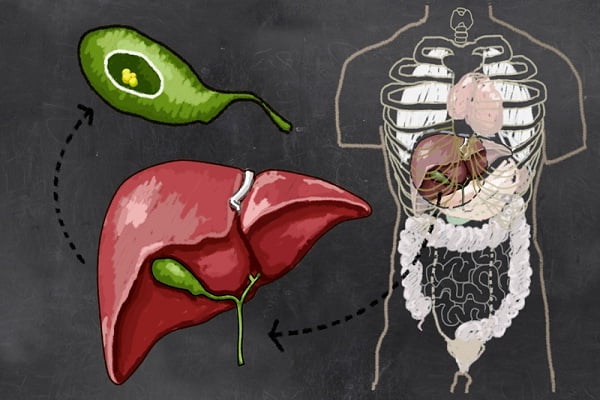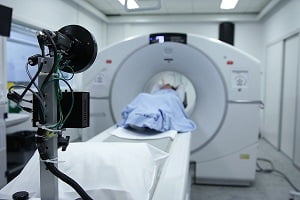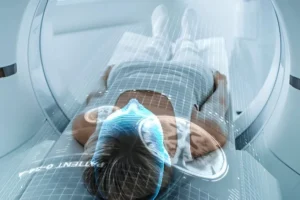Stage 4 Gallbladder Cancer
- Updated on: Jun 26, 2024
- 4 min Read
By
- Published on Apr 5, 2019


Gallbladder cancer is a form of cancer that progresses in the gallbladder, a small organ in the shape of pear that is situated under the liver, at the back the lower right ribs. The main function of the gallbladder is to store and concentrate bile produced by the liver. Bile is all is a dark green or yellowish brown fluid that helps to digest fats present in food, and later it is released into the small intestine by the gallbladder or the liver. The liver can also perform the same function, therefore gallbladder can be removed usually without affecting the health of a person.
Stages of Gallbladder cancer
After a person is diagnosed with gallbladder cancer, healthcare professionals may aim to figure out if it has metastasized, and if so, how far. This process is referred to as staging. The staging of cancer describes how much a cancer has developed in the body. It helps to determine the intensity of the cancer and guide the treatment process.
The earliest stage gallbladder cancer is stage 0. Stages then range from stages 1 through 4. The intensity of cancer is such that the lower the number of stage, the less is the cancer metastasized. A higher number, such as stage 4 gallbladder cancer, indicates that cancer has metastasized more.
Stage 4 gallbladder cancer
It is estimated that about 4 out of 100 people with stage 4 gallbladder cancer may survive for 5 years or more after being diagnosed with the disease.
Stage 4 gallbladder cancer is divided into two sub-categories:
Stage 4-A gallbladder cancer
In this stage of gallbladder cancer, the tumor usually metastasizes into the blood vessels leading to the liver, and/or has extended to an adjacent organ other than the liver. Tumor cells may reach neighboring lymph nodes, but they have not reached distant organs.
The tumor usually progresses into one of the main blood vessels (portal vein or hepatic artery) leading into the liver or it may develop into 2 or more structures outside of the liver. It may or may not have spread to more than 3 adjacent lymph nodes.
Stage 4-B gallbladder cancer
In this stage, tumor acquires the most advanced form. Cancer cells are either metastasized to lymph nodes beyond the gallbladder or the tumor has spread to distant organs affecting them.
It can spread to distant organs including the liver, lungs, or the lining of the abdomen (peritoneum).
Metastatic Gallbladder Cancer
The main reason that cancer is so fatal is its ability to metastasize in the body and distant body organs. Tumor cells may spread locally by moving into neighboring normal tissues. If a gallbladder cancer can also spread to distant parts of the body, it is referred to as metastatic gallbladder cancer. It is also known as stage 4 gallbladder cancer. Metastasis is the process by which tumor cells spread to different body parts.
Metastatic gallbladder cancer usually spread through the body in a series of steps. These steps include:
- developing into, or invading, neighboring normal tissues
- affecting the walls of adjacent lymph nodes or blood vessels
- moving through the lymphatic system and bloodstream to different parts of the body
- progressing in small blood vessels at a distant location, invading the blood vessel walls, and moving into the surrounding tissues
- grow in tissue until a tiny tumor develop
- triggering new blood vessels to grow, which provides a blood supply to the tumor to grow continuously
Symptoms of metastatic gallbladder cancer or stage 4 gallbladder cancer
Metastatic gallbladder cancer usually spreads to the bone, liver and lung. Stage 4 gallbladder cancer does not always produce symptoms. When symptoms do occur, their nature and frequency will depend on the size and location of the metastatic gallbladder cancer. Some common signs of metastatic gallbladder cancer include:
- tenderness and fractures, when cancer spreads to the bone
- a headache, dizziness or seizures when cancer has spread to the brain
- shortness of breath, when cancer progresses in lungs
- jaundice or swelling in the abdomen, when cancer develops and metastasize to the liver
When can Stage 4 Gallbladder Cancer be no Longer Controlled?
Once stage 4 gallbladder cancer is metastasized, it is usually very hard to control. Most of the metastatic gallbladder cancers cannot be cured with current treatments. Although, there are some treatments for patients associated with metastatic gallbladder cancer to provide relief, but the cancer cannot be cured. The aim of these treatments is to stop or slow the progression of cancer or to relieve symptoms induced by it. In some cases, treatments for metastatic gallbladder cancer may help prolong life.
If you have been diagnosed with metastatic cancer that can no longer be cured, you and your loved ones may want to discuss end-of-life care. Even if you choose to continue receiving treatment to try to reduce cancer or control its progression, you may receive palliative surgery care to check the symptoms of gallbladder cancer and the side effects of treatment.
Researchers are trying to find new ways to kill or stop the progression of primary and metastatic gallbladder cancer cells. This research includes finding ways to boost your immune system to fight cancer. Researchers are also trying to find ways to disrupt the steps in the process that allow tumor cells to metastasize to distant locations.












